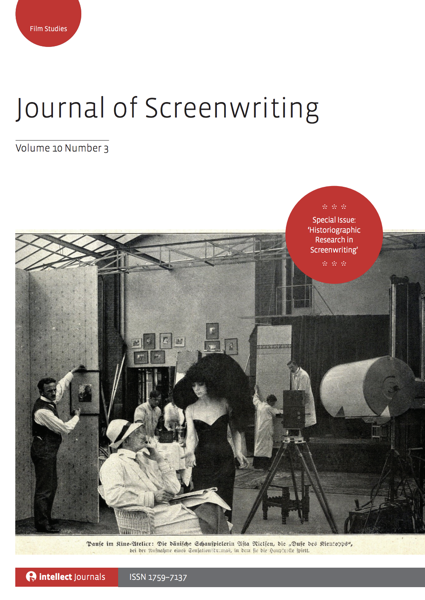Highlighting the articles in the past editions of the Journal of Screenwriting, of which I am the Book Reviews Editor. Hopefully these abstracts will entice you to did a little deeper into the history and future of screenwriting. — Rosanne
No room for the fun stuff: the question of the screenplay in American indie cinema by J. J Murphy
One of the most interesting trends in recent independent cinema has been for film-makers to avoid using traditional screenplays in making their films. Not only have emerging film-makers associated with the so-called mumblecore movement, such as Joe Swanberg, Aaron Katz and Ronald Bronstein, veered away from depending on conventionally written screenplays, but other critically acclaimed films, including The Pool (Smith, 2008) and Ballast (Hammer, 2008), have as well. Indeed, some of the most notable American indie film-makers Gus Van Sant, David Lynch and Jim Jarmusch have employed alternative strategies to the screenplay in such recent films as Elephant (2003), Inland Empire (2006), and The Limits of Control (2009). What is behind these developments and why has the conventional screenplay been under attack? What are the aesthetic benefits of choosing not to rely on a traditional script? Is this a completely new phenomenon or has the industrial screenplay always been an obstacle? I explore these issues by looking at three major strategies that indie film-makers have used in place of the traditional screenplay: improvisation, psychodrama and visual storytelling. Finally, I argue that for current independent film-makers in the United States of America these methods provide an appropriate model for a practice that is attempting to create a truly viable alternative to Hollywood cinema.
The Journal of Screenwriting is an international double-blind peer-reviewed journal that is published three times a year. The journal highlights current academic and professional thinking about the screenplay and intends to promote, stimulate and bring together current research and contemporary debates around the screenplay whilst encouraging groundbreaking research in an international arena. The journal is discursive, critical, rigorous and engages with issues in a dynamic and developing field, linking academic theory to screenwriting practice.
Get your copy and subscription to the Journal of Screenwriting Today!
* A portion of each sale from Amazon.com directly supports our blogs
** Many of these books may be available from your local library. Check it out!
